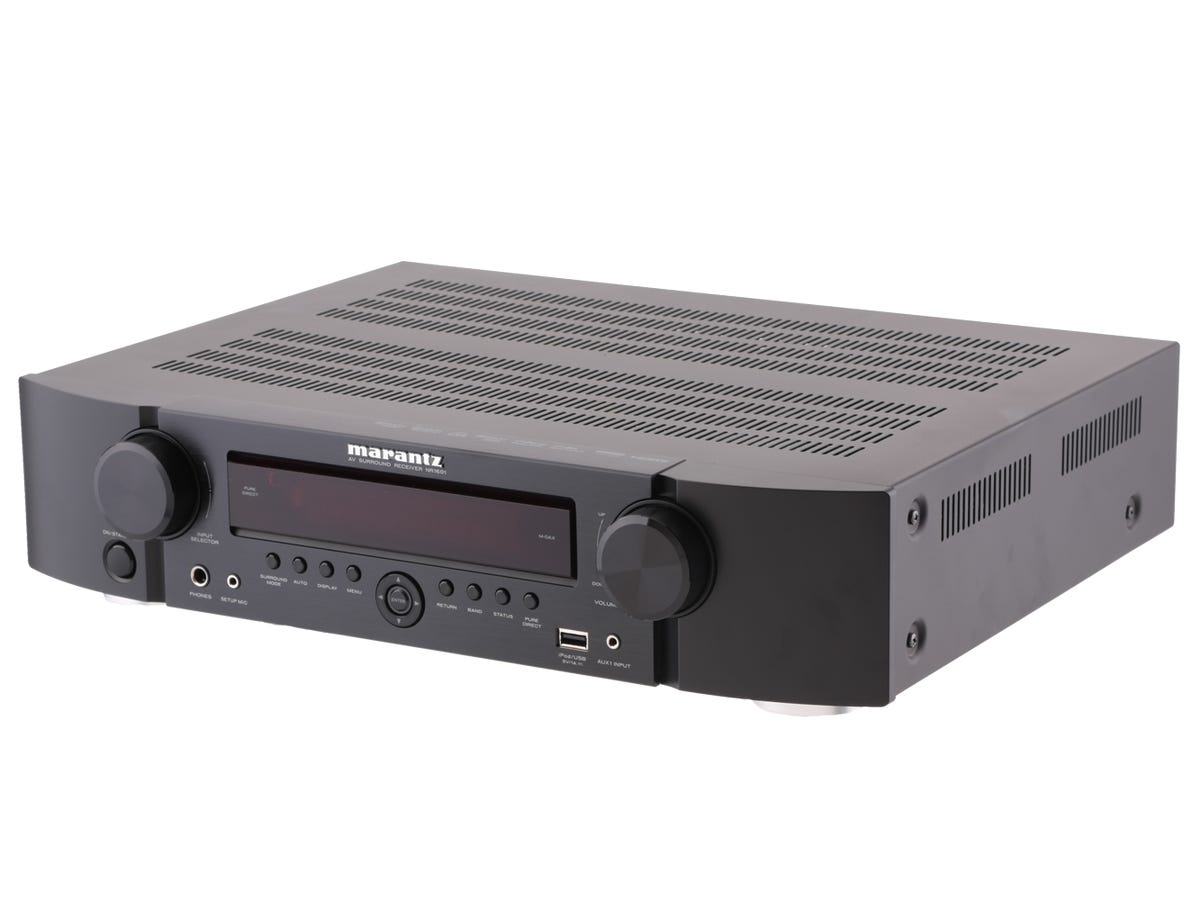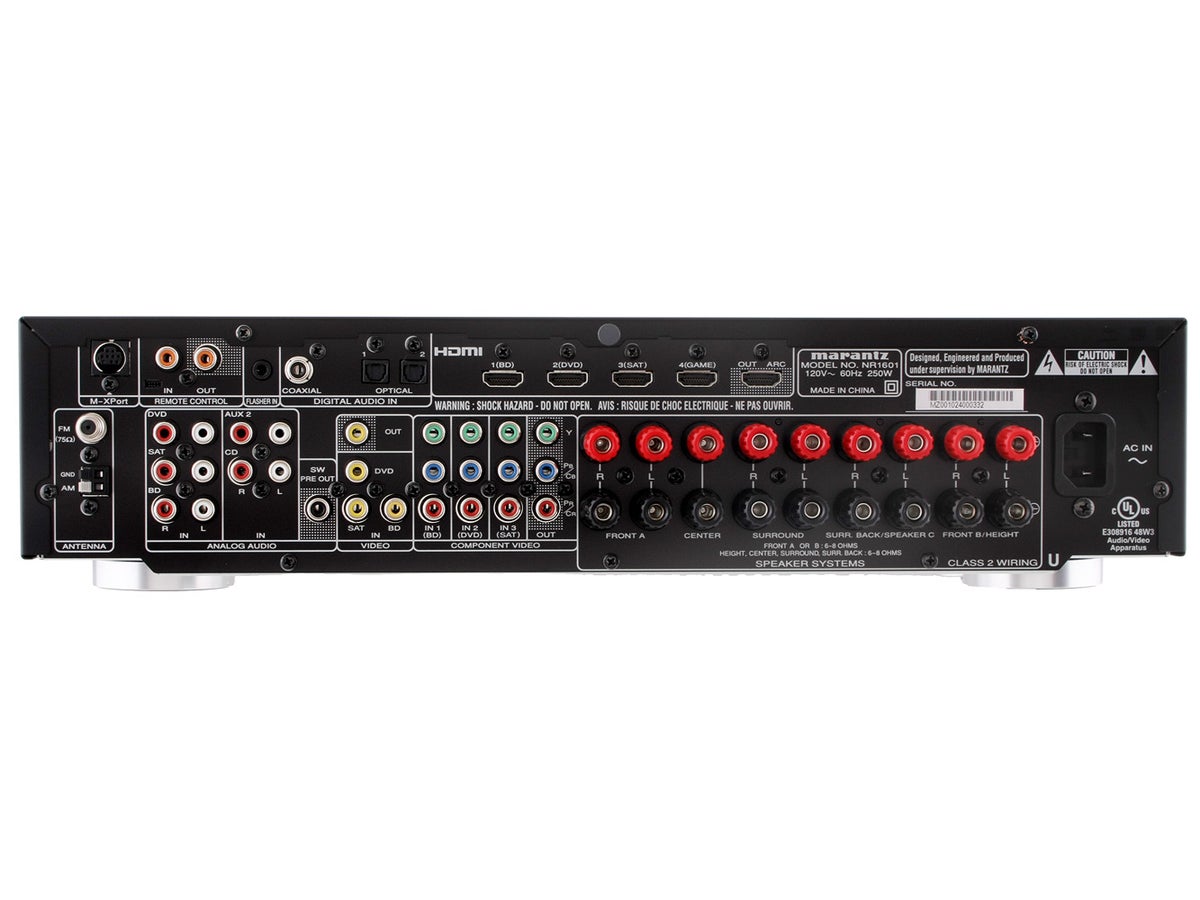Marantz NR1601 (photos)
The Marantz NR1601 features a stylish, slimline design and excellent sound quality, although other AV receivers offer more features for less money.

Marantz NR1601
Generally, when you're buying an AV receiver it comes down to features and performance, with aesthetics being a wash; there's little difference among all the bulky, black boxes. But in the case of the Marantz NR1601, the main appeal is its slimline design; its 4.19-inch height is substantially smaller than a traditional AV receiver.
Even better, the Marantz's slender dimensions don't have a negative impact on its sound quality; it's one of the better-sounding midrange receivers we've tested this year.
The main trade-offs are HDMI inputs and price. The NR1601 only features four HDMI inputs, whereas many competitors have six, and its $600 price tag is notably more than, say, the $450 Pioneer VSX-1020-K. However, if you don't need tons of HDMI connectivity and are willing to pay for its good looks, the Marantz NR1601 is the way to go.
Slimline design
Aesthetics
Text-based GUI
iPod browsing
iPod playback


